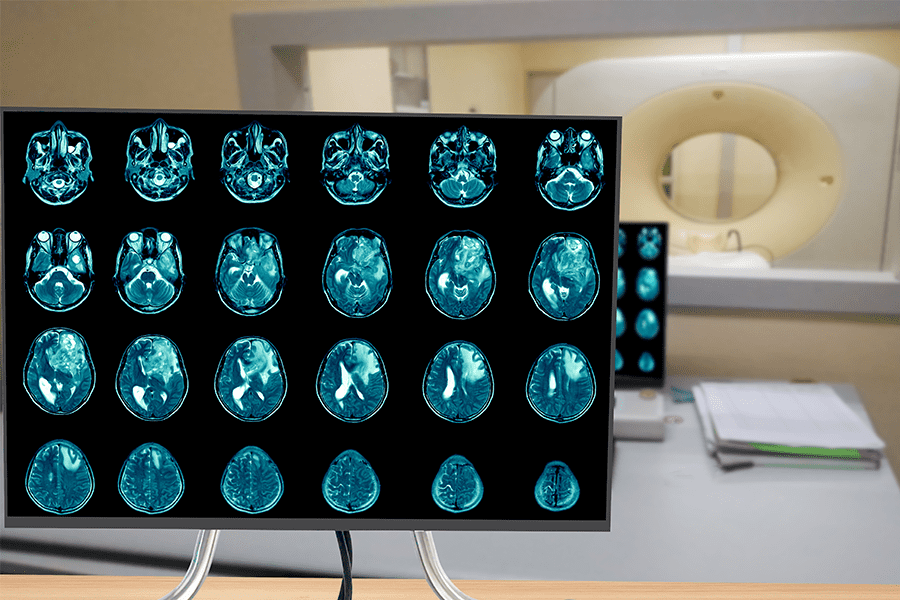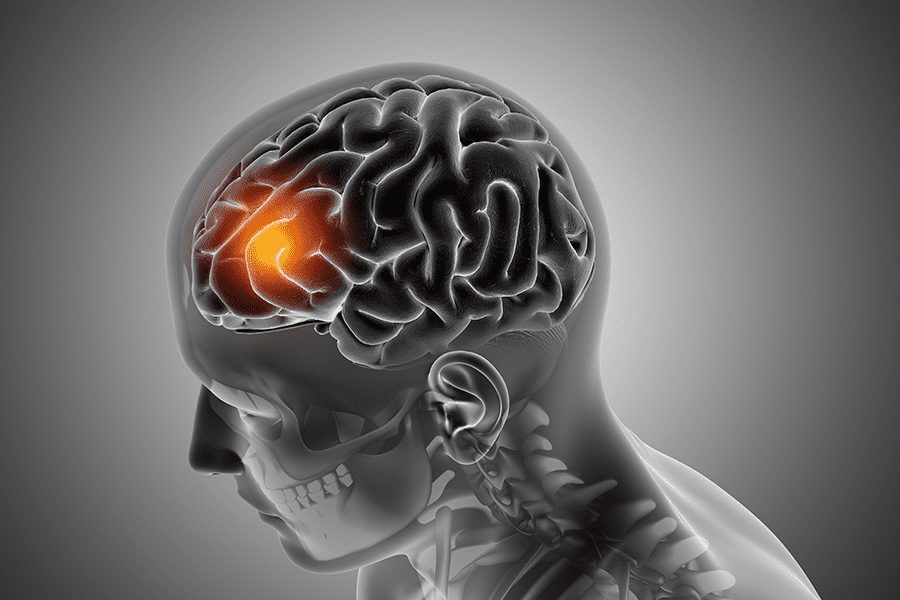 What is a glioblastoma?
What is a glioblastoma?- What is the main cause of glioblastoma?
- What are the symptoms of glioblastoma?
- How is glioblastoma diagnosed?
- What are the treatments for glioblastoma?
- Can you live with a glioblastoma?
If you or a loved one is diagnosed with a brain tumor, it can be terrifying to grapple with, especially when it comes to the more serious type of brain tumor called a glioblastoma. Unfortunately, the 10-year survival rate for patients diagnosed with a glioblastoma is less than one percent, and there are a lot of questions that both patients and doctors still have about this condition.
In this blog, David S. Rosen, M.D., who is board certified in neurosurgical oncology, provides some insight about glioblastoma to help you understand the glioblastoma diagnosis and what can be done to help patients diagnosed with this type of cancer.
What Is a Glioblastoma?
Dr. Rosen says, “A glioblastoma is the most common primary brain tumor that we find in adults.” The glioblastoma can occur at any age, although the average age for diagnosis is around 64 years old. A glioblastoma can also affect the spinal cord. It is a malignant tumor that grows aggressively and there is no cure yet for this disease.
Glioblastomas grow by attacking the astrocyte cells, which support the spinal cord and brain. They most often arise as de novo malignancies, meaning they begin at Grade IV, which are the most dangerous on the clinical tumor ranking scale.
However, glioblastomas can respond to treatment, improving the quality of life in the short term for many patients.
What Is the Main Cause of Glioblastoma?
 We don’t know exactly what causes a glioblastoma to form. It is likely a combination of environment and genetics, but we’re still learning about these types of tumors.
We don’t know exactly what causes a glioblastoma to form. It is likely a combination of environment and genetics, but we’re still learning about these types of tumors.
We know that it is a type of cancer that grows from astrocytes, star-shaped cells that form usually in your cerebrum, which is the largest part of the brain. This type of tumor can also spread to other brain cells.
A glioblastoma can exist as a primary or a secondary cancer. Secondary tumors progressive from lower grade tumors, however, when it forms, Dr. Rosen says it typically “is a grade IV, or malignant brain tumor.” Secondary glioblastomas can occasionally form from slower growing Grade II or Grade III but can turn aggressive over time.
Glioblastomas produce their own blood supply, which is what accelerates their growth and makes them so dangerous. They rarely spread beyond the brain or upper spinal cord.
What Are the Symptoms of Glioblastoma?
Dr. Rosen says glioblastomas cause “a wide variety of neurological symptoms, commonly: Headaches, seizures, difficulty with movement, and sometimes speech dysfunction are the first signs of a problem.” Symptoms depend on the location of the tumor.
A glioblastoma causes swelling in the brain. As the tumor grows, the increased pressure can cause:
- Balance issues
- Confusion and memory loss
- Fatigue
- Nausea
- Personality changes
- Seizures
- Severe headaches
- Slurred speech
- Weakness
- Vision issues
- Vomiting
Dr. Rosen says, “Many patients have had progressive symptoms for a number of weeks or months.” If you’re experiencing any of these symptoms, please see your doctor right away.
How Is Glioblastoma Diagnosed?
Your doctor has several diagnostic tools available to confirm the diagnosis of a glioblastoma. This includes (typically in order):
- Neurological exams to check your balance, coordination, hearing, strength, and reflexes
- Imaging tests such as MRI, PET, or CT scans to look inside the brain for any abnormalities
- Conducting a biopsy, which is removing a tissue sample from the brain tissue to look for cancer cells
If you’ve been diagnosed with one, the first thing to recognize is that treatment is available to help your symptoms and potentially slow the tumor’s progression. Each treatment is individualized as is your body’s response.
What Are the Treatments for Glioblastoma?
 Dr. Rosen says the glioblastoma is, “often treated with a combination of surgery, radiation, and chemotherapy.” Because the tumor is aggressive, and some would characterize it as stubborn, your doctor will talk with you about attacking the glioblastoma with everything at our disposal. This includes:
Dr. Rosen says the glioblastoma is, “often treated with a combination of surgery, radiation, and chemotherapy.” Because the tumor is aggressive, and some would characterize it as stubborn, your doctor will talk with you about attacking the glioblastoma with everything at our disposal. This includes:
- Neurosurgery to remove the tumor
- Radiation therapy, which uses high-energy beams to kill cancer cells
- Chemotherapy, which uses drugs to kill the cancer cells
- Tumor treating fields (TTF) therapy uses an electrical field to disrupt growth of tumor cells
- Targeted drug therapies to disrupt the growth of the tumor
Dr. Rosen says, “Neurosurgery often provides a frontline treatment for the diagnosis of glioblastoma.” The goal of the surgery is to remove as much of the tumor as possible to keep it from spreading. Complete removal often isn’t possible because the glioblastoma has spread into the underlying brain tissue. That’s why other supportive treatments, such as radiation and chemotherapy, are needed to kill the remaining cancer cells.
“After the surgery, patients steadily recover for a number of weeks,” Dr. Rosen continues. “Along that journey of recovery, they often build full care teams, which include neuro oncologists and radiation oncologists.” This team works together with you and your family to fight cancer and provide supportive care.
In consultation with your clinical team, supportive palliative care may be ordered to provide pain relief and other symptoms caused by the glioblastoma. Palliative care can run parallel to the other aggressive clinical treatments designed to ease your symptoms.
Can You Live With a Glioblastoma?
Yes, you can live life with a glioblastoma. Doctors cannot reverse the effects or cure it, but they can slow the tumor’s growth and improve your quality of life.
Although we haven’t found a cure yet, new clinical trials are coming out all the time that show real promise of a cure someday. Each FDA-approved clinical treatment once started as a clinical trial. Talk with your doctor about participating in some of the revolutionary new treatments available today.
A cancer diagnosis is never easy. In addition to the physical symptoms, you may feel afraid and anxious. At Orlando Neurosurgery, we work hard to assuage the fears of patients and their families. We care about your health. Please don’t hesitate to contact us.
Sign Up for Our Newsletter
Get the latest news and updates from Orlando Neurosurgery delivered straight to your inbox.


